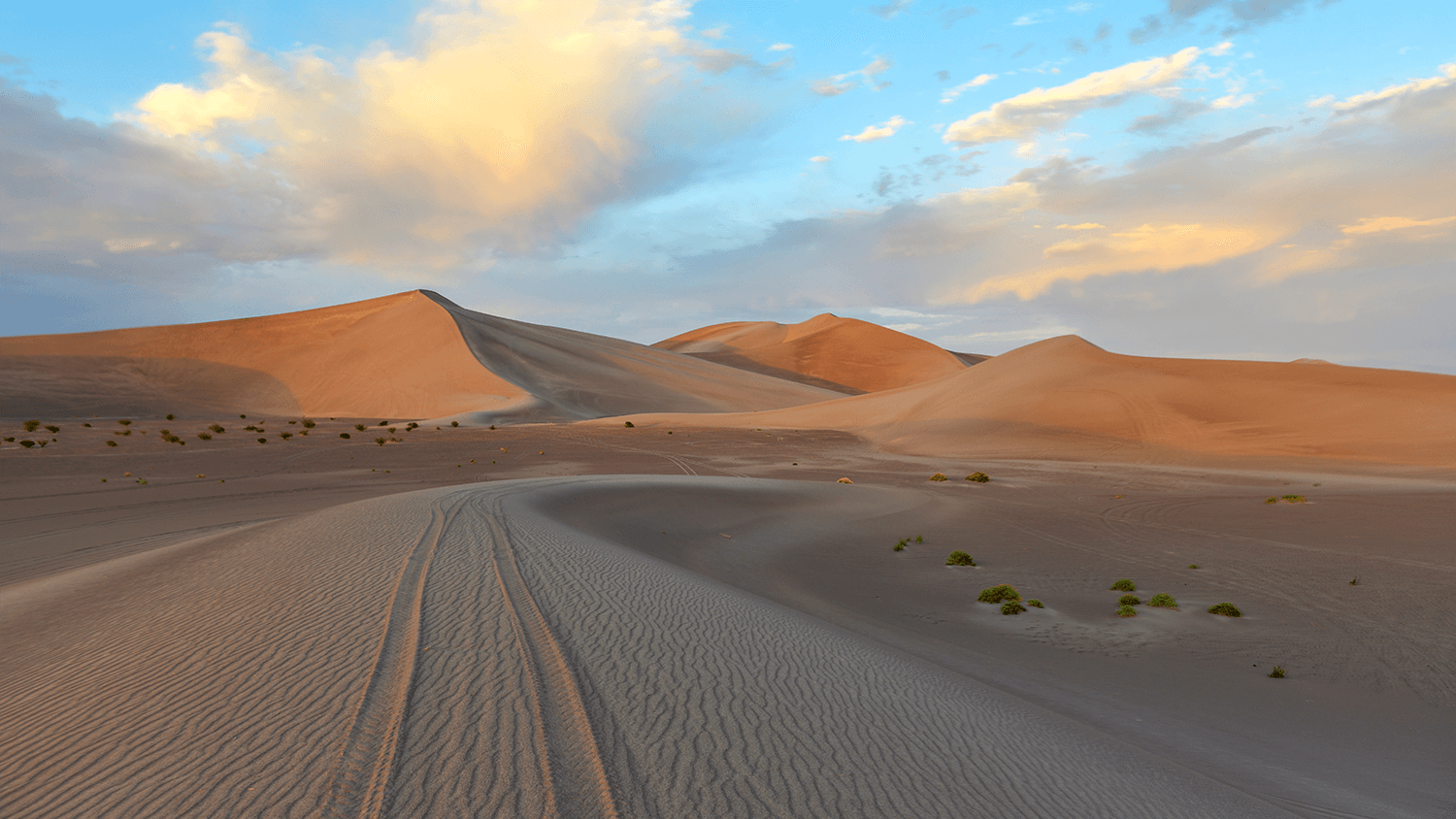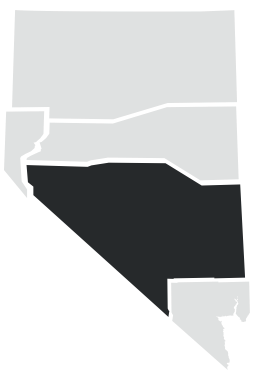
Amargosa Big Dune Recreation Area
Ready to make those off-roading dreams a reality? While Nevada’s Basin and Range brims with more mountain ranges, hot springs, and ghost towns than anywhere else in the country, the Silver State’s pristine, unfenced, and still-wild landscapes are also home to more singing sand dunes than anywhere else. Along with Sand Mountain and Crescent Dunes, Nevada’s singing sand dunes scene beckons off-roaders, geologists, wildlife lovers, and everyone in between to this natural phenomena first-hand.
The closest dunes to the Las Vegas area, dip those paddle tires into sand that sings and dunes that boom at Amargosa Dunes, just outside Beatty and Pahrump along the Free-Range Art Highway.
Singing sand dunes, sometimes called booming dunes, are a big deal because there just aren’t a whole lot of them in the world, let alone the U.S. With about only 30 singing sand dunes on the entire planet, three of them are found within Nevada borders, enticing the off-roader in all of us off the highway and into super soft sand. Turns out, Nevada’s very dry conditions are the perfect backdrop for this geologic fantasy to go down, considering singing sand can only happen with a very particular grain size amid very arid conditions, each producing its own specific pitch.
A mostly locals hangout, Amargosa Dunes stretches 1.5 miles into the surrounding Mojave Desert, with the biggest dune about 500 feet tall. Even though you may think that you can sandboard at this Nevada sand dune (or any others), it’s just not realistic in terms of safety or accessibility. All kinds of off-roaders are ripping around, up, and over the top of this dune making pedestrian traffic unsafe, plus there’s nowhere in Nevada to rent the gear you’d need to actually sandboard this baby.
Big Dune Beetle
Amargosa Dune provides a critical habitat for the Big Dune beetle, a rare beetle species that’s lived in the Amargosa Valley for thousands of years. Their biggest threat is off-roading traffic, though the entire dune is protected as a BLM designated Area of Critical Environmental Concern (ACEC), with five acres specifically set aside for the protection of this threatened insect species. In addition to the Big Dune beetle, a handful of other creatures depend on this fragile ecosystem as a means of survival. In fact, southern Nevada elevations below 5,000 feet (like this one) are home to the Desert Tortoise, the Big Dune Scarab beetle, and more. Do your part in protecting these very rare creatures to keep them off the Endangered Species List!
Know Before You Go
Amargosa Dunes Camping & the Best Times to Ride
SItuated in Amargosa Valley about 29 miles south of Beatty on US 95, off-roaders rip Amargosa Dunes all year long, though prime temperatures occur in the early spring or late fall. Right on the outskirts of Death Valley National Park in the Mojave Desert, temperatures can exceed the 100 degree mark, going well into the 110-120 degree range during the summer months. Even then, off-roaders rip Amargosa Dunes all year long, though prime riding conditions occur during the early mornings in early spring and late fall. Primitive camping is permitted on the outskirts of the dunes, just be sure to stake your spot away from all OHV traffic. No amenities or services lie within—remember to bring any and everything you may need, and pack out everything you plan on bringing in.
Getting There
The Amargosa Dunes lie within the Amargosa Valley, which is located between Beatty and Pahrump along US 95. Situated directly on Highway 95, an easy landmark to keep an eye out for is the Area 51 Travel Center & Brothel. From that junction, head north on US 95 for about 13 miles, then make a left onto Big Dunes Road. From here, follow the road the additional 6 miles into the dunes—keep in mind that the road will slowly start to become more and more sandy as you approach the dunes. Do not attempt to drive this road without 4×4 access, and even then 4WD equipped vehicles can get stuck easily in places surrounding Amargosa Dunes. These southern Nevada sand dunes make for fun riding, but be sure to keep trailers, motorhomes, and all other street-vehicles too close to the dunes.
Recreate Responsibly
When traveling Nevada backroads, live by the Dirt Road Code and travel with 4×4 access and a spare tire. Carry plenty of snacks and water, be sure to let someone know where you’re headed and when you plan to return, and practice Leave No Trace methods whenever possible. Before you hit the dirt, remember all OHVs must be registered, and be sure to ride only within designated areas. Ride safe and smart!
Hours:
Amargosa Big Dune Recreation Area, sometimes called Amargosa Dunes, are managed by Nevada BLM and open 24 hours a day, 7 days a week. The only thing preventing you from accessing Amargosa Dunes would be related to a seasonal, weather-related closure. For more info on Big Dune, Nevada, to get your hands on a map, and check conditions before heading into Nevada’s unblemished backcountry, get in touch with Nevada BLM directly at (702) 515-5000.
Admission:
Amargosa Dunes are protected by the Nevada Bureau of Land Management (BLM), making free public access available to all.
This Location:

City
Amargosa ValleyRegion
Central
